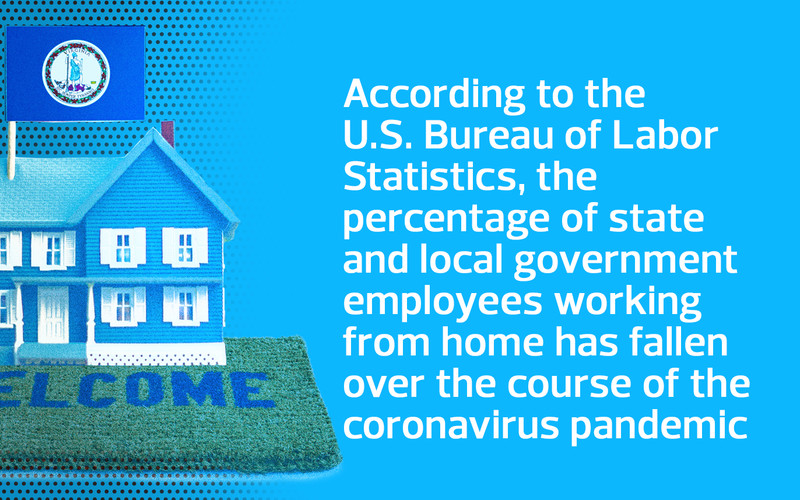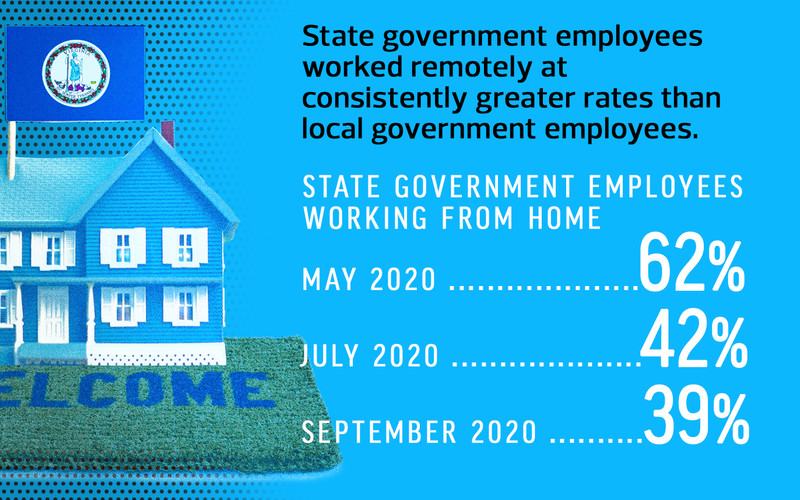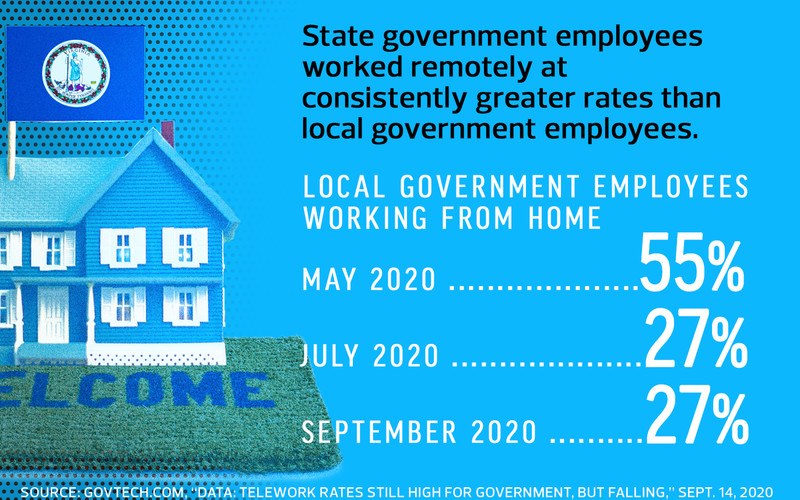Coronavirus or not, the Southwest Virginia Regional Jail Authority required a new digital phone system. The SWVRJA operates four correctional facilities in Virginia and sought to overhaul its legacy phones before the fiscal year ran out, part of a transformation that in recent years has included the adoption of video-enabled visitation for inmates and the rollout of ubiquitous Wi-Fi for employees in all its jails.
Of course, the virus doesn’t recognize fiscal year constraints. So, even as the SWVRJA began taking safety measures and many employees started working from home, it needed to choose a technology, fund it and roll out the system to users.
“In normal times, we’d have held in-person meetings and closely explored our options rather than do this upgrade remotely,” says Jason Tuggle of the SWVRJA procurement department. However, the authority wanted phones that were more user-friendly, so it turned to a favored contract and proven product to ease a remote upgrade.
Completing IT projects during the pandemic has proved both mission-critical and uniquely challenging. Government IT departments have been pressed into action to ensure government continues to function during a time of social distancing and public health safety guidelines. At the same time, they’ve had to stay safe themselves, supporting solutions remotely and calling on technology partners to help launch new systems.
“Just as with private industry, many government agencies quickly realized they were not fully prepared for a shift that required most of their employees to work from home,” says Shawn McCarthy, research director for government infrastructure and systems optimization strategies at IDC.
At the same time, some challenges have been galvanizing. “The pandemic has triggered broader conversations that will lead to the digital transformation of government systems that may have been lagging before,” McCarthy says.


Safely Moving Ahead with a Phone Upgrade
For the SWVRJA, Tuggle discovered a cooperative contract with CDW•G that the authority could use to secure the desired Cisco 7841 and 8851 IP phones, licenses and Cisco Unified Communications Manager server software. “The contract made it so we didn’t have to go through an extensive procurement process,” Tuggle says.
From May to July, at what was then the height of the pandemic, the SWVRJA acquired the solution, sent its IT staff safely into the four facilities to swap physical phones, then turned to CDW•G’s voice engineers to configure the system from afar.
61%
The percentage of states outsourcing some IT infrastructure operations
Source: National Association of State Chief Information Officers, The Agile State CIO: Leading in a Time of Uncertainty, 2020 State CIO Survey, October 2020
“The servers for the phone system are housed in a data center at our Abingdon facility, which controls the phones at all four sites,” says Bobby Miller, a SWVRJA IT help desk specialist who was in charge of the physical rollout. “The CDW•G engineer installed and configured the Unified Communications Manager servers remotely.”
DIVE DEEPER: 5 ways the pandemic is reshaping government technology plans.
Corona, Calif., Turned to VDI for Continuity
Having already spent a few years moving key server infrastructure and services to the cloud, the city of Corona, Calif., had begun exploring putting its desktops there too when the coronavirus sent many of its workers home.
“We’d begun by pushing all that infrastructure to the cloud, and it was natural to ask, ‘What about the desktops?’” says Corona CIO Chris McMasters.
Back to the article
Autoplay
Full Screen
Grid View
Exit Full Screen
Back to the article
Autoplay
Full Screen
Grid View
Exit Full Screen
Corona had been regularly backing up all its systems to an offsite facility, but due to the threat of natural disasters in Southern California, the city wanted a better solution for business continuity. With many of its systems already moving to the cloud, Corona started looking for a cloud-based virtual desktop infrastructure plan. The city adopted Citrix Cloud on Microsoft Azure.
“Citrix allows us to encapsulate the data so none of it gets left on end-user devices,” says Kyle Edgeworth, the city’s deputy CIO. “When we were going down this path, Microsoft came out with Windows Virtual Desktop and Windows 10 multisession, which allow us to have a bunch of employees sharing the same resources on one machine.”
MORE FROM STATETECH: What are they key IT trends to watch for in 2021?
How Governments Can Remotely Configure Devices
Corona was well into a pilot of Citrix VDI in its Azure government cloud when the pandemic stuck, which was fortuitous because it turned out the city would need the cloud VDI to function.
“Cities of our size, we have no clout in the world of procurement. Entire states were buying up all the laptops out there, and every order we put in either got rejected or would take 90 days,” McMasters says. “It forced our hand, to a large degree, so we went from this pilot of about 30 people to a full-blown, production-grade rollout within about 24 hours.”
Today, more than half of Corona’s 800 employees are using the Citrix cloud-based VDI solution. The biggest challenge was rolling out the solution to public safety officials and others who deal in sensitive data.
We went from this pilot of about 30 people to a full-blown, production-grade rollout within about 24 hours.”
Chris McMasters
CIO, Corona, Calif.
For that to happen, Corona’s solution needed certification from the U.S. Department of Justice that it met Federal Information Processing Standards for encryption, a process that would normally take several months to a year. Corona’s IT leaders worked with Citrix and Microsoft to describe for the DOJ how the VDI solution would protect data in transit and effectively reboot each desktop to a clean state so no sensitive data would remain.
“Because of COVID, we couldn’t physically configure every device and hand it back to employees,” Edgeworth says. “We’re using multifactor authentication on top of everything, and Citrix and Microsoft showed how we’re encapsulating data in the solution. The DOJ understood and agreed it met their requirements.”
EXPLORE: How can tech-fluent leaders make the case for investment?
Investing in IT to Support Digital Court Proceedings
At the municipal court system in Stow, Ohio, IT staff has been working hard to ensure the system continues functioning during the pandemic. That’s included the rapid rollout of LogMeIn remote access solutions so workers can get to their desktop resources from home, as well as investment in new Polycom RealPresence Group 310 systems to support increased videoconferencing between courtrooms and jails.
“We were very busy at the beginning, getting people what they need to work from home,” says Stow Courts IT Director Mark Hatfield.
The IT department continues its work on new projects to support a more digital court system, such as an electronic citations platform for the police department and a virtual check-in system with a videoconferencing app for probation officers and offenders.
“Some of what we do will remain virtual going forward,” Hatfield says.
He adds, “We’ve been fortunate to have resources at this time, like the state Supreme Court grant to upgrade our videoconferencing. We’re now well prepared for the future.”
Photography by Tyler Oxendine















